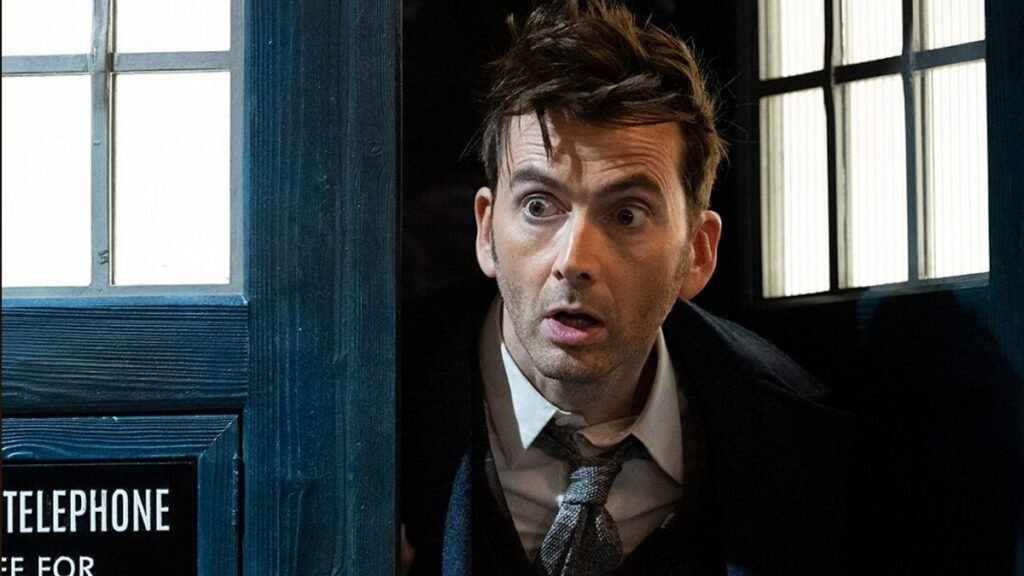
The Mind-Bending Plot Twists
Twin Peaks isn’t just about throwing crazy plot twists at you; it’s about serving them up with a side of cherry pie, damn fine coffee, and a hefty dose of Lynchian oddity. Remember that mind-bending moment when we finally found out who offed Laura Palmer, only to be dragged into the Black Lodge alongside Special Agent Cooper, leaving us utterly bewildered? And what about that shocking resurrection of a certain character in the most jaw-dropping fashion imaginable? “It’s the element of surprise that keeps us hooked,” as David Lynch once remarked, and let me tell you, Twin Peaks sure knows how to deliver those surprises with an extra cherry on top!
But let’s not overlook the smaller yet equally perplexing plot twists sprinkled throughout the series. From enigmatic owls and backwards-speaking dwarves to doppelgangers and parallel dimensions, Twin Peaks never fails to keep us guessing at every twist and turn. It’s no wonder fans have spent years dissecting and debating over the hidden meanings behind each cryptic clue and symbol. As Mark Frost wisely noted, “The devil is in the details, and it’s those details that make it feel like a place where life has been lived.” Indeed, Twin Peaks feels like a world where anything is possible; where reality warps and contorts like the gnarled branches of its iconic Douglas firs scattered throughout town.
The Enigmatic Characters
Enter the enigmatic realm of Twin Peaks, where a plethora of mysterious residents dwell, leaving viewers in a constant state of bewilderment. From the enigmatic Laura Palmer to the eccentric Log Lady, each character adds another layer of complexity to an already convoluted storyline. With their idiosyncrasies and obscure motivations, the denizens of Twin Peaks are like enigmatic puzzle pieces waiting to be deciphered, keeping us on edge as we await their next move.
Then there’s Agent Dale Cooper, the coffee aficionado FBI agent who indulges in pie and possesses a penchant for dreams and unconventional investigative methods. As he delves deeper into the enigmas surrounding Twin Peaks, his eccentric persona and unyielding optimism shine amidst the town’s shadows. With his trademark thumbs-up gesture and cryptic utterances such as “Every day, once a day, give yourself a present,” Agent Cooper emerges as a refreshing yet perplexing figure in this clandestine world filled with mysteries and secrets.
The Influence on Modern TV Shows
In the realm of shaping contemporary TV programs, the profound impact of “Twin Peaks” cannot be overstated. This enigmatic series has not only redefined the boundaries of narrative but also ushered in a new era of innovative television. Through its fusion of enigma, intensity, and otherworldly elements, “Twin Peaks” defied conventional norms and sparked a revolution in storytelling.
The visionary genius of David Lynch and Mark Frost was so far ahead of its time that it still resonates with audiences today. As TV critic Matt Zoller Seitz aptly stated, “Twin Peaks altered our perception of television and its possibilities.” With its eccentric characters and dreamlike visuals, the show mesmerized viewers and set a benchmark for small screen storytelling. It comes as no surprise that modern TV productions continue to pay tribute to “Twin Peaks,” underscoring its enduring influence across generations.
The Impact on Pop Culture
If you believed that pop culture was solely about catchy melodies and trendy movements, prepare to have your perception shattered! Twin Peaks sauntered onto the scene in the ’90s, clutching a delectable cherry pie in one hand and a steaming cup of exceptional coffee in the other, poised to disrupt the status quo. Suddenly, everyone clamored for a taste of that enigmatic small-town allure. Just as Megalmorini eloquently stated, “Twin Peaks was a paradigm shift. It demonstrated that TV could possess the same depth and captivation as any cinematic masterpiece.” Envision this: a township where owls conceal dark truths, and mysteries lie hidden beneath each pine tree’s shadow. Little wonder it etched an indelible mark on pop culture akin to Agent Cooper’s fondness for his trusty tape recorder.
The reverberations of Twin Peaks weren’t limited to just serving up scrumptious pie. It ignited fervent discussions, elaborate theories, and meticulous dissections of every minuscule detail. All at once, television ceased being mere background noise; instead, it transformed into an intricate puzzle begging to be deciphered. In Lynch’s own words, â€I believe people are drawn to enigmas. They relish being teased.†And tease they did – leaving behind a trail of discarded cherry stems and forsaken log cabins in their wake. Thus, next time you savor a divine cup of coffee reminiscent of Twin Peaks’ iconic brews, reflect upon the enduring legacy it bestowed an amalgamation of idiosyncratic personas, mind-boggling plot twists, and enough intrigue to elicit even approving hoots from perceptive owls.
The Unforgettable Soundtrack
The enigmatic soundtrack of Twin Peaks is not merely a backdrop, but a vital force in shaping the eerie and mysterious ambiance of the show. Crafted by Angelo Badalamenti, the music possesses a haunting beauty that adds profound layers to the already puzzling world of Twin Peaks. From the spine-chilling theme song to the dreamlike melodies that encapsulate the surreal vibe, each note serves as a spectral presence, meandering through the narrative like an elusive spirit in a shadowy forest.
In David Lynch’s own words, “Music is crucial. A lot of the mood and feelings come from the music.” And indeed, he speaks truth. The music in Twin Peaks acts as a silent narrator, leading us through intricate plot twists with its emotional highs and lows. Whether it be Laura Palmer’s melancholic theme or the lively jazz tunes at Roadhouse performances, every musical element is carefully selected to intensify our viewing experience and immerse us deeper into the enigmatic realm of Twin Peaks.
The Quirky Aesthetics
In the enigmatic realm of “Twin Peaks,” the eccentric visuals swirl like a whirlwind, leaving you perplexed and exhilarated as you are thrust into a world where the bizarre mingles with the ordinary in the most delightful way imaginable. From the peculiar dancing dwarf in the mysterious Red Room to the delectable cherry pie and exquisite coffee at the Double R Diner, every detail is meticulously designed to evoke an otherworldly charm that is both bewildering and enthralling.
The fusion of vibrant retro Americana with the haunting allure of the Pacific Northwest forms a visual tapestry that is simultaneously recognizable and alien, drawing viewers into a mesmerizing trance that lingers well beyond the closing credits. As David Lynch once aptly stated, â€I don’t know why people expect art to make sense when they accept life’s inherent lack of logic.†In this offbeat universe of “Twin Peaks,” where secrets lurk behind every corner and cryptic messages flow from characters like the enigmatic log lady, it is precisely this nonsensical beauty that renders its quirky aesthetics so irresistibly captivating and unforgettable.
The Cult Following
A TV show that can captivate fans and leave them pondering for ages? Enter Twin Peaks. It’s not just a mere show; it’s an entire universe filled with its own peculiar idiosyncrasies. The devoted followers of this phenomenon are a fascinating group- you might spot them deep in conversation about Lynchian symbolism while enjoying a cup of coffee at the local diner.
What distinguishes Twin Peaks is its talent for keeping viewers intrigued and speculating long after the final scene fades to black. As one enthusiast aptly describes, “Twin Peaks is more than just entertainment; it’s an ever-evolving enigma.” And who could overlook the iconic cherry pie and delicious coffee that have become synonymous with this beloved classic? Whether you’re new to the series or a seasoned aficionado, the mysterious charm of Twin Peaks’ world is simply irresistible.
The Creator’s Vision
In the perplexing realm of television, there exist a select few visionaries who dare to push the boundaries of storytelling like David Lynch and Mark Frost did with their creation of Twin Peaks. Their collaboration birthed a narrative landscape that defied conventions and blurred the lines between reality and surrealism in a burst of creativity that continues to mesmerize audiences.
Lynch once mused, “Why is it that we find satisfaction in solving mysteries without knowing the underlying reasons? It’s akin to life itself.” This sentiment perfectly encapsulates the enigmatic essence behind Twin Peaks- a series that delves into the depths of human psyche, weaving together interconnected stories that keep viewers on their ts. Lynch’s penchant for the bizarre and unexpected, combined with Frost’s intricate plotting, created an intricate tapestry of intrigue that still captivates audiences and spawns a legion of devoted fans today.
The Legacy of Twin Peaks
“Through its enigmatic blend of perplexity, surrealism, and bursts of small-town charm, “Twin Peaks” etched an unforgettable imprint on the annals of television history that still echs with audiences today. From its eccentric ensemble to its mind-bending narrative twists, the series shattered conventional boundaries on the small screen, ushering in a new era of storytelling. In the words of David Lynch himself, “I adore the medium of television, I revel in mysteries, and I relish immersing myself in a world alongside beloved characters- immersing oneself night after night,” and that is precisely what “Twin Peaks” delivered.
The impact of “Twin Peaks” transcends its initial airing period, shaping a wave of subsequent TV shows. Series such as “The X-Files,” “Lost,” and “Stranger Things” all bear witness to the debt owed to the groundbreaking storytelling and offbeat aesthetics of “Twin Peaks.” As critic Matt Zoller Seitz opined, “‘Lynch’s masterpiece evolved into a near-religious object for a certain type of viewer,’ one who welcomed their television drenched in acid while simultaneously laced with elements akin to soap opera-on-cocaine.” The devoted cult following amassed by “Twin Peaks” over time attests to its enduring influence within popular culture.n


